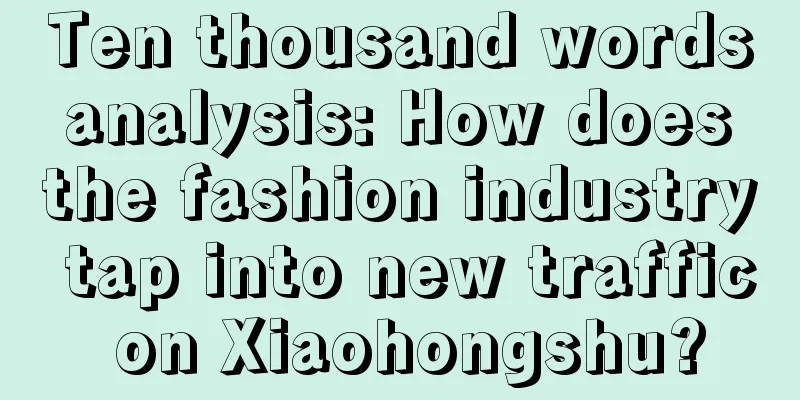Why I think Lei Jun will launch a 99,000 yuan "Redmi car"

In the minds of customers, the 215,900 yuan Xiaomi SU7 is equivalent to the 1999 yuan Xiaomi phone, which is in the middle price range (slightly higher than the 199,000 yuan that the public expects). According to this logic, I believe that Lei Jun will continue to launch the "best car under 500,000 yuan" corresponding to the 4999 yuan phone price in the future, and will also launch the "99,000 yuan" Redmi car corresponding to the 699 yuan Redmi phone price. But all this starts with winning a flanking battle. For non-head brands, the best strategy is to fight on the flanks. The flanks are to avoid the strong positions of head brands and establish bases in the empty spaces that they cannot reach. For example, in the smartphone industry, Huawei and Apple are fighting offensive and defensive battles. For other brands, it is a flanking battle. Xiaomi mobile phones have found a vacancy in the Internet direct sales channel and high cost performance, and OPPO and vivo have found a channel vacancy in the sinking market. In the electric vehicle industry, BYD and Tesla are already among the top brands. However, there are obviously more vacancies in this industry than in the mobile phone industry. For example, there are vacancies for high cost performance, vacancies for the longest battery life, vacancies for high-end products, vacancies for the best control experience, vacancies for the best safety, etc. For Lei Jun, Xiaomi Motors still chose the cost-effective route because this is his base. However, the challenges in the automotive field are very different from those in the mobile phone field. 1. Cognitive vacancies: preferably within 500,000The gap between cognitive leadership and cost leadership is profit. For a brand, the more advanced the recognition, the better. Qinghualang is associated with Moutai's national liquor status and is one of the two major sauce-flavored liquors, which is an effort to lead in recognition. Luckin Coffee was originally a slightly better grade than instant coffee, but after being associated with Starbucks, its brand recognition has also led a lot. For Xiaomi, the most profitable product is the 699-yuan Redmi phone. However, in the eyes of customers, it is a brand that kicks Apple and punches Huawei. The benefit of this brand recognition is that even if the Redmi phone is 699 yuan, customers do not think it is bad. Achieving cognitive leadership is Lei Jun's core technology. In a startup show, Liu Qiangdong said that he should not compete with Lei Jun in marketing, because he is not an ordinary person who can sell mobile phones for tens of billions. This is true. In the matter of marketing, Lei Jun can be said to be a godfather-level figure. There are at least two parts to achieving cognitive leadership: cognitive leadership and technological leadership. Lei Jun imitates Jobs in every aspect. When Jobs held a product launch conference, Lei Jun also held one; when Jobs wore jeans and a black T-shirt, Lei Jun also wore the same clothes; when Jobs took photos holding his products, Lei Jun also did the same; when Jobs went against the industry giant IBM in every aspect, Lei Jun also did the same. Lei Jun doesn't even mind being called Lei Jun. The purpose of doing so is to make customers feel that the brand status of Xiaomi mobile phones is infinitely close to that of Apple. In the marketing of Xiaomi cars, Lei Jun continued the previous method and paid tribute to a wave of well-known new energy vehicle brands. People with sharp eyes will find that why not pay tribute to the world and Huawei? The answer is that Huawei is a brand with more potential. Some people also wondered why Xiaomi didn't pay tribute to Geely and Great Wall because these two brands have fallen behind in the new energy vehicle market. If Xiaomi pays tribute to the laggards, customers will think Xiaomi is also lagging behind. In addition to associating with domestic new energy vehicle brands, Lei Jun also continues to associate with Porsche and Tesla. This is the same as Xiaomi mobile phones targeting Apple mobile phones. Xiaomi Mobile was the first to propose to make the most cost-effective mobile phone under 2,000 yuan, and this goal has long been achieved. Xiaomi Auto has proposed the goal of "the best under 500,000 yuan", and the first thing it needs is to lead in brand potential in perception. Lei Jun also has other tricks: he imitates Steve Jobs when making mobile phones and Musk when making cars. At least he keeps consistent in terms of clothing. For Lei Jun, the more people discuss his relationship with Musk, the closer Xiaomi Motors will be to Tesla in terms of perception. The above is cognitive leadership, and next we will talk about technological leadership. Lei Jun never tires of introducing the technological leadership of Xiaomi cars and frequently compares them with Tesla. This approach is the same as with Xiaomi mobile phones. Lei Jun once particularly liked to emphasize that Xiaomi mobile phones use Leica cameras, Qualcomm chips, etc., and the configuration is almost the same as Huawei and Apple. "Mainstream luxury brands like BBA and Porsche have now achieved 16,000 rpm. Tesla, once the global ceiling for motors, has a new Model S Plaid priced at nearly one million yuan and has a speed of 20,000 rpm." Xiaomi's V6 and V6s motors can reach 21,000 rpm and will be installed on the first batch of Xiaomi SU7 models. In terms of batteries, Lei Jun said that Xiaomi has developed a new super 800V (volt) silicon carbide high-voltage platform, and deliberately emphasized that Xiaomi's 800V is "real 800V". "Most of our competitors claim 800V, but in fact they can't reach that. Some of them claim 800V when it's over 500V." Lei Jun said that Xiaomi's highest voltage reaches 871V, "other car manufacturers may say they are 900V or quasi-900V." In 2020, Tesla ushered in the era of integrated die-casting. Xiaomi Motors, which sees Tesla as a benchmark, has also developed large-scale die-casting technology. Lei Jun demonstrated Xiaomi's self-developed 9,100-ton large die-casting cluster at the press conference, and claimed that Xiaomi is the only automobile manufacturer in China that has both a full-stack self-developed large die-casting cluster and self-developed alloy materials. The report of Snow Leopard Finance shows Lei Jun's style: benchmarking and surpassing the industry leader in every key area. In fact, the technological leadership we are talking about here is also cognitive leadership. You have to let customers know that your technology is leading. Many car brands also have similar technological leadership as Xiaomi, but the difference is that they believe that as long as they are technologically advanced, customers will know about it. They are happy to study technological leadership, but not so happy to study how to publicize it. The latter is equally important. However, it is not measurable and cannot be converted into assessment indicators, so it is difficult to enter the management of modern enterprises. This is exactly the new challenge facing enterprises in this era: to make the difficult-to-measure customer feelings the focus of management. Because the results of an enterprise ultimately come from the customer's feelings about the brand. 2. Crowd vacancies: Loyal customers of Xiaomi brandCompared with other manufacturers, Xiaomi Auto has a big advantage, which is the loyal customers of the Xiaomi brand. Under the premise that Xiaomi cars have similar configurations to other manufacturers, these customers will give priority to Xiaomi cars, because the success of Xiaomi mobile phones has established the advantage of Xiaomi cars' high cost performance. Xiaomi Auto built its own factory and invested in the entire automotive industry chain, unlike some new brands that outsourced their products to traditional automakers. It also invested real money in technology, which also won Xiaomi Auto a wave of goodwill. In the era of mobile Internet, the elements of product, price, channel and promotion have been integrated. For example, when you see a product on your mobile phone and place an order, promotion and channel are integrated. For Xiaomi Auto, the crowd and channels are also merging. Xiaomi brand customers are the channels of Xiaomi Auto. They see the products on their phones, place orders, and then recommend them to others. At this point, customers, channels, and promotions are fused. Therefore, Xiaomi’s loyal customers are its population niche and also its channel niche. In "General Knowledge of Brand Positioning", we mentioned the flanking war: with the mental vacancies as the core, find vacancies in various marketing nodes such as crowd, market, product, price, channel and promotion. As long as you are not a leading brand, you need to fight on the flanks. You need to avoid the strong position of the leader at every node, otherwise you will be ruthlessly crushed. For example, the Hammer smartphone has industry-leading marketing skills, and each launch event attracts a lot of attention. However, the price gap it targets has been firmly occupied by Xiaomi and Huawei, and even textbook-level marketing capabilities cannot save it from failure. However, for Xiaomi Auto, winning the flank battle requires one more key element: consistency, synergy and enhancement between the various spaces. Xiaomi's loyal customers expect Xiaomi cars to be cost-effective, which may not be consistent with Lei Jun's expectations. If the price of Xiaomi cars is higher than their expectations, Lei Jun will lose the advantage of this group of customers. There are many similar error cases, such as Evergrande Ice Spring, which costs 5 yuan, but its promotion focuses on Nongfu Spring, which costs 2 yuan. This is a lack of consistency. Xiaomi mobile phone is a positive example. Its target market is the middle and low-income groups on the Internet. Its price is 1999 yuan. Its channel is direct sales on the Internet. Its mindset is high cost performance. Because of its high cost performance, it has a large number of shipments. Because of the large number of shipments, its popularity is high, and the production cost is lower. When such a virtuous cycle is in place, Xiaomi achieves cost leadership. It can produce higher-configuration mobile phones at a lower cost. The larger the gap between cost leadership and cognitive leadership, the higher the brand's profit. However, it is not easy to establish a virtuous circle for Xiaomi Auto. If Lei Jun wants to enter the high-end series, it will be difficult for Xiaomi's loyal customers to continue to follow up. In their eyes, Xiaomi products are a label of high cost performance. CITIC Securities' financial report believes that high-end users of Xiaomi mobile phones can support the sales of Xiaomi cars: Xiaomi's existing smartphone user base will become the penetration base for future smart car products. As of Q2 2023, Xiaomi's domestic MIUI users are close to 150 million. At the same time, considering the mid-to-high-end positioning of Xiaomi's first model, the mid-to-high-end smartphone customer base will become the core target audience of Xiaomi Auto. Since determining the dual-brand strategy and entering the mid-to-high-end market, the company has experienced setbacks in the Xiaomi 11 series, a buffer in the Xiaomi 12 series, and the regained recognition of the Xiaomi 13 series. We believe that the company has the ability to steadily promote the continued penetration of mid-to-high-end models. In Q2 2023, Xiaomi's market share in the RMB 4,000-6,000 price range in mainland China reached 12.7% (up 6.2pcts year-on-year), mainland China's ASP increased by more than 24% year-on-year, and the proportion of mid-to-high-end MIUI users in the total domestic users exceeded 20%. The continuously expanding base of mid-to-high-end users will help Xiaomi Auto achieve better cross-selling effects. But we believe there is a huge gap between Xiaomi phones and Xiaomi cars. Cars are different from mobile phones. The purchase decision of cars is more complicated. It is not as simple as the decision of a mobile phone worth a few thousand yuan. Because the decision is complicated, the tolerance rate is also lower. It is not as tolerant of the problem of charging and heating as early mobile phone users. Xiaomi's customers buy high-end mobile phones, but it does not mean that they can buy high-priced cars. The competition is also more intense. As Lei Jun himself said, if you can't make it to the top five in the world, you will be eliminated. For Xiaomi Auto, the first battle is the decisive battle, and the most important thing is to establish a cost-leading advantage as soon as possible. It is risky for Lei Jun to set a high price for the first car. In order to achieve cost leadership as soon as possible, we believe that the price of Xiaomi car will not exceed 200,000 yuan. In my article on January 10, I estimated the price to be 199,000 yuan. The price announced on March 28 was 215,900 yuan. Lei Jun still chose the price-performance route. 3. Will Xiaomi Motors change its name?It would be more appropriate for Lei Jun to use a new brand for smart cars. We believe that Xiaomi's smart cars will start with an expert brand in the future. Xiaomi's mall and investment categories were once called Xiaomi Mall and Xiaomi Investment. Later, they were renamed Youpin Mall and Tianxing Technology. Meituan's homestay and ticketing categories were once called Meituan Homestay and Meituan Movie. Later, they were renamed Hazelnut Homestay and Maoyan Movie. In the lecture "General Knowledge of Brand Positioning", the "Expert Brand Triangle" is mentioned, which states that an expert brand should be launched when all three conditions are met at the same time - existing products cannot cover the product, it is a strategic category, and it is within the capabilities of the enterprise, otherwise it is not necessary. For example, air conditioners are a large category, but they are not a strategic category for Xiaomi and have nothing to do with the company’s core values. However, you can use the Xiaomi brand to make air conditioners. For example, towels, power banks, data cables, etc. are small categories and can also be made under the Xiaomi brand. However, online shopping malls and ecological chain investments are large categories and are also related to Xiaomi’s strategy, so we need to launch an expert brand and even use a dedicated team to do it. Smart cars meet the conditions of the expert brand triangle and should launch an expert brand. Lei Jun initially used the Xiaomi brand to make smart cars, mainly to attract public attention. After all, "Xiaomi makes cars" is more topical than "Lei Jun makes cars". However, Xiaomi's brand perception is too low-end, and it is not suitable to be shaped into a cognitively leading car brand. In fact, launching an expert brand is common sense for entrepreneurs. Musk announced that the brand of the mobile phone he would build would be "Model π". Many people say that Midea is also a brand extension, but in fact, Midea's e-commerce platform and smart robots are expert brands. Many people say that Haier is also a brand extension, but they don't know that Casarte, Thor, and Leader are also Haier brands. When Haier entered the North American market, it was often rejected by customers because of its brand. Haier then acquired a local brand, and customers accepted it. More importantly, for Lei Jun and Xiaomi, car manufacturing is a brand new business. Xiaomi's brand potential can only provide limited help, as the span from mobile phones to cars is much greater than that from mobile phones to home appliances. Instead of using the Xiaomi brand with a strong low-end label, it is better to start a new brand without burden. 4. Xiaomi Motors should have a new nameWe believe that Xiaomi Auto should change its name. The fundamental reason is that in this era of over-communication, transaction costs have become an important part of corporate operating costs. A correct name and the adjustment of the business operations behind it can greatly reduce the cost of communication. These reduced costs will become part of the company's competitiveness. Behind the brand naming is the adjustment of the enterprise management direction. It is not simply changing a name, but requires that the internal management of the enterprise should revolve around the feelings of external customers. We use General Motors' surpassing of Ford; the failure of Volkswagen Phaeton and Haval H8; and the success of Lynk & Co to argue why Xiaomi Auto should change its name. 5. GM surpasses FordIn the book Brand Positioning, we talked about the competition between General Motors and Ford. The key point was that General Motors realized that the needs of customers for buying cars had changed fundamentally: Customers are not buying a means of transportation; they are buying a status symbol. Ford Motor Company was the first to invent the automobile assembly line and focus on one model. This innovation greatly improved production efficiency. In 1925, it took a Ford factory only 10 seconds to assemble a car, while its competitors took 728 hours. The ever-decreasing costs brought about ever-decreasing prices. In 1911, the Ford car cost $780 and had a market share of 20%. In 1916, the price of Ford cars dropped to $360. In 1920, its market share was 42%. By 1921, its market share reached 56%. Ford Motor's growth flywheel is to reduce manufacturing costs through assembly line operations and then expand market share by lowering prices. A larger market share brings more orders, and more orders increase the scale advantages of automobile manufacturing. It seemed like a perfect and unshakable business model until the emergence of General Motors overturned Ford's dominance. Even in 1920, when Ford had a 42% market share and GM had only 11%, GM insisted that Ford's ideas were out of date. General Motors believes that in the new era, cars are no longer simple means of transportation, but props that represent the customer's identity, status and taste. Customers still care about functions, but they also value appearance, design, comfort, and driving experience. GM provides different brands for different classes of customers: Cadillac, GM, Chevrolet, and Pontiac. Facts have proved that GM's idea is correct, and the times are on GM's side. The inspiration from this history to Xiaomi Auto is that what customers buy is not just a high-quality and low-priced car, but a symbol of status. The brand "Xiaomi" gives people a sense of high cost performance, whether it is a Xiaomi mobile phone or a Xiaomi car. For Xiaomi Auto, it can either be the Cadillac of the electric car era, or be GM or Buick. It can never be Ford or Chevrolet. The Ford and Chevrolet of the electric car era are BYD and Tesla. 7. Failure of Haval H8 and Volkswagen PhaetonIn 2013, the strong market performance of the Haval brand encouraged Great Wall Motors. In order to challenge the mid-to-high-end market, Great Wall Motors launched the Haval H8 SUV model priced at more than 150,000 yuan. The Haval H8, which challenged people's perceptions, suffered the consequences, with the company suffering losses amounting to billions. Haval H8 is like BMW Brilliance. Customers’ first reaction when buying a Brilliance BMW is to remove the word “Brilliance” because the Brilliance brand reduces the brand value of BMW. When customers choose a car, the first thing they consider is price, followed by car model and brand. 150,000 is the dividing line between mid-range brands and economy brands. Haval's success in the economy SUV category has deeply bound this brand to economy SUVs. When a 250,000 yuan Haval car is placed next to a Subaru of the same price, customers will feel that the former is cheaper, even if it has better configuration. It is precisely because many car companies have learned similar lessons that they have launched new high-end brands. Volkswagen's high-end brand is Bentley, Toyota's high-end brand is Lexus, BMW's high-end brand is Rolls-Royce, Mercedes-Benz's high-end brand is Maybach, and General Motors' high-end brand is Cadillac. If Bentley's name is Volkswagen Bentley and Cadillac's name is General Motors Cadillac, users also want to remove the Volkswagen and General Motors logos. The failure of the Volkswagen Phaeton, a high-end car, was also due to repeating the same mistake. Its name is derived from Volkswagen, so is its logo, and even its appearance is very similar to Volkswagen's low-end models. The Xiaomi brand has also experienced similar incidents. In "Xiaomi Entrepreneurship Thoughts", Lei Jun said that the huge success of the Redmi phone diluted the potential energy of the Xiaomi brand, causing customers to believe that Xiaomi was a low-end mobile phone brand for a long time. Lei Jun also does not recommend that the brand names in the Xiaomi ecosystem continue to use "Purple Rice", "Green Rice" or "Blue Rice" because this will cause confusion among customers and will be detrimental to the growth of the Xiaomi brand. 7. Lynk & Co’s successA large part of Lynk & Co's success is due to its use of a new brand. If the logo of this car is changed to Geely, its sales will be much lower. What many people don’t know is that Lynk & Co is produced by Geely Automobile Group. The car does not use the Geely name because it is a new product developed in cooperation with Volvo Cars. The agreement stipulates that a new brand must be used. For Geely, the Geely brand carries a lot of sentiment among entrepreneurs. They are unwilling to accept suggestions to launch a new brand, but prefer to cultivate the Geely brand into a high-end brand. 8. Challenges facing Xiaomi MotorsThe same is true for Lei Jun. The Xiaomi brand is the embodiment of his entrepreneurial spirit, and it is very difficult for him to adjust the brand strategy from the perspective of external customers. Lei Jun’s first challenge is: For external customers, Xiaomi's brand positioning is high cost performance, and Xiaomi cars are naturally high cost performance products. So when Xiaomi Motors positioned itself as the "best car under 500,000 yuan", a large number of customers still wanted to buy it at 199,000 yuan. (The final price announced proved that Lei Jun still followed the call of mainstream customers.) Lei Jun’s second challenge is: If he really wants to make cost-effective electric cars, BYD and Tesla are the opponents he must face. In fact, the success of Xiaomi mobile phone is due to the fact that it avoided the strong battlefields of Huawei, Samsung and Apple, and fought a flanking battle on the online front where the giants are not good at. Xiaomi Motors also needs to avoid the strong battlefields of Tesla, BYD and Huawei, and focus resources on the weak defenses of the giants in order to establish a base. Compared with other car manufacturers, one of Xiaomi Motors' significant advantages is its expertise in online marketing. In the mobile phone category, Apple is also good at online marketing, but Apple phones are expensive, leaving enough space for Xiaomi phones. In the car category, Tesla is also good at online marketing, but Tesla's prices are not as high as Apple's in the mobile phone category, leaving little space for Xiaomi cars. Lei Jun’s third challenge is: Xiaomi's corporate DNA is to create affordable and attractive products with high cost performance. However, in the electric vehicle category, the high cost performance vacancy has been occupied by BYD and Tesla. Xiaomi Motors needs to avoid this familiar battlefield and occupy a new position: to be the Cadillac or Buick in electric vehicles. This is a great challenge to Xiaomi's corporate capabilities. We believe that for Xiaomi Auto, if it is positioned as a high-end product, changing its name is the best strategy. The success of GM, the failure of Haval H8, the failure of Volkswagen Phaeton and the success of Lynk & Co have proven this. 8. ConclusionLei Jun often uses clever marketing methods to achieve cognitive leadership, focus on core products to achieve cost leadership, and quickly establish a virtuous cycle of growth flywheels. The new challenge for Lei Jun is that Xiaomi's brand potential can bring some attention, but the automotive industry and mobile phones are very different. After all, the span from mobile phones to cars is much greater than that from mobile phones to home appliances. We believe that if you are positioning high-end products, launching a new brand is the right choice. New brands have no cognitive burden and are more likely to establish cognitive leadership. In a business world with extremely high transaction costs, a cognitively leading brand can save a lot of transaction costs for the company, thereby achieving cost leadership as soon as possible and creating a competitive advantage. If Xiaomi's cars remain at the high-cost-performance price of 215,900 yuan, it is feasible to use the Xiaomi brand. However, if it moves into high-priced products, it is better to launch a new brand. In the customer's mind, the 215,900 RMB Xiaomi SU7 is equivalent to the 1,999 RMB Xiaomi phone, which is in the middle price range. According to this logic, Lei Jun will continue to launch the "best car under 500,000 RMB" corresponding to the 4,999 RMB mobile phone price range, and will also launch the "99,000 RMB" Redmi car corresponding to the 699 RMB Redmi phone price range. Author: Zhang Zhiyu WeChat public account: Zhang Zhiyu |
<<: Xiaohongshu's Hot Articles in March
>>: How will Harbin Beer respond to the “huge wealth” created by the city’s tourism boom?
Recommend
How is Shopee Malaysia? How to increase sales?
Shopee is a relatively late-developed platform, bu...
These 24 brand viewpoints will teach you how to build a brand from scratch
24 brand building perspectives, from insights into...
How does Amazon add variations? How many variations can I add?
On the Amazon platform, adding variations means co...
Can a new Amazon store be linked to a store assistant? How to link to a store assistant?
I believe that those who do cross-border e-commerc...
What should I do if my Shopee account is closed? How can I reopen it?
A Shopee account is the key to running a store. On...
The secret of Xiaohongshu operation - running volume template
In the marketing ecosystem of Xiaohongshu, the run...
Epic change! Taobao gradually opens WeChat payment
Recently, a piece of news #Taobao gradually opens ...
5 user analysis rules used by major Internet companies!
This article summarizes the five golden rules of u...
Problems with new consumer brands
In the ever-changing consumer goods market, more a...
How to increase Xiaohongshu’s traffic 10 times?
In the world of digital marketing, Xiaohongshu, as...
It’s hard to make money from short dramas anymore, but Mi Meng is still making a lot of money?
This article introduces the successful cases and b...
Can you make money by opening a store on Shopee? What is the process of opening a store?
There are many express delivery stores on the plat...
What? Selling wontons on Xiaohongshu, 20,000 sales in 2 months, with a turnover of over one million
This article disassembles the personal account &qu...
Kuaishou increases its trillion-dollar food delivery business and launches group purchase and home delivery
Previously, Douyin already had a function to direc...
Crazy Xiao Yangge bets on independent apps, live streaming slice business comes to the fore
As one of the earliest anchors to start IP live st...









